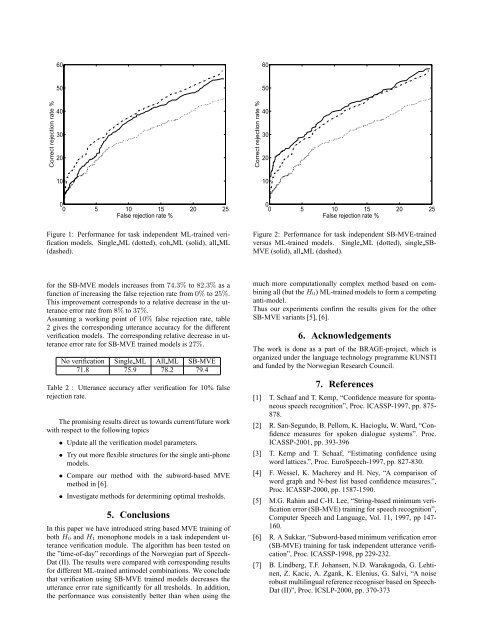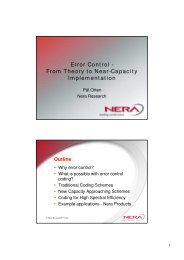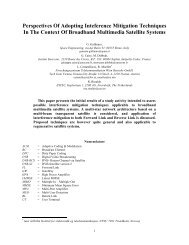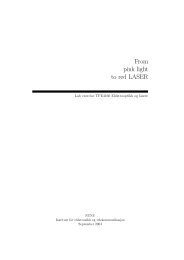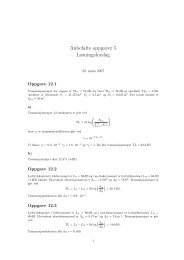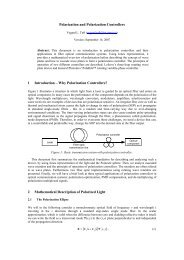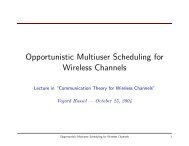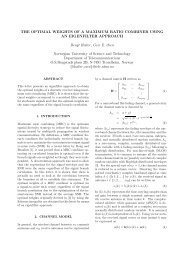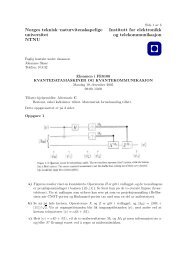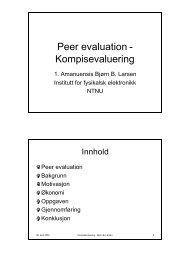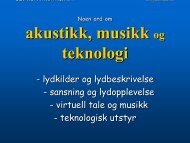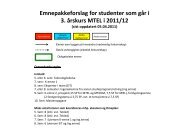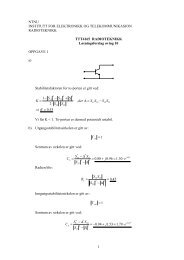Task Independent Speech Verification Using SB-MVE Trained ...
Task Independent Speech Verification Using SB-MVE Trained ...
Task Independent Speech Verification Using SB-MVE Trained ...
You also want an ePaper? Increase the reach of your titles
YUMPU automatically turns print PDFs into web optimized ePapers that Google loves.
60<br />
60<br />
50<br />
50<br />
Correct rejection rate %<br />
40<br />
30<br />
20<br />
Correct rejection rate %<br />
40<br />
30<br />
20<br />
10<br />
10<br />
0<br />
0 5 10 15 20 25<br />
False rejection rate %<br />
0<br />
0 5 10 15 20 25<br />
False rejection rate %<br />
Figure 1: Performance for task independent ML-trained verification<br />
models. Single ML (dotted), coh ML (solid), all ML<br />
(dashed).<br />
Figure 2: Performance for task independent <strong>SB</strong>-<strong>MVE</strong>-trained<br />
versus ML-trained models. Single ML (dotted), single <strong>SB</strong>-<br />
<strong>MVE</strong> (solid), all ML (dashed).<br />
for the <strong>SB</strong>-<strong>MVE</strong> models increases from 74.3% to 82.3% as a<br />
function of increasing the false rejection rate from 0% to 25%.<br />
This improvement corresponds to a relative decrease in the utterance<br />
error rate from 8% to 37%.<br />
Assuming a working point of 10% false rejection rate, table<br />
2 gives the corresponding utterance accuracy for the different<br />
verification models. The corresponding relative decrease in utterance<br />
error rate for <strong>SB</strong>-<strong>MVE</strong> trained models is 27%.<br />
No verification Single ML All ML <strong>SB</strong>-<strong>MVE</strong><br />
71.8 75.9 78.2 79.4<br />
Table 2 : Utterance accuracy after verification for 10% false<br />
rejection rate.<br />
The promising results direct us towards current/future work<br />
with respect to the following topics<br />
• Update all the verification model parameters.<br />
• Try out more flexible structures for the single anti-phone<br />
models.<br />
• Compare our method with the subword-based <strong>MVE</strong><br />
method in [6].<br />
• Investigate methods for determining optimal tresholds.<br />
5. Conclusions<br />
In this paper we have introduced string based <strong>MVE</strong> training of<br />
both H 0 and H 1 monophone models in a task independent utterance<br />
verification module. The algorithm has been tested on<br />
the ”time-of-day” recordings of the Norwegian part of <strong>Speech</strong>-<br />
Dat (II). The results were compared with corresponding results<br />
for different ML-trained antimodel combinations. We conclude<br />
that verification using <strong>SB</strong>-<strong>MVE</strong> trained models decreases the<br />
utterance error rate significantly for all tresholds. In addition,<br />
the performance was consistently better than when using the<br />
much more computationally complex method based on combining<br />
all (but the H 0) ML-trained models to form a competing<br />
anti-model.<br />
Thus our experiments confirm the results given for the other<br />
<strong>SB</strong>-<strong>MVE</strong> variants [5], [6].<br />
6. Acknowledgements<br />
The work is done as a part of the BRAGE-project, which is<br />
organized under the language technology programme KUNSTI<br />
and funded by the Norwegian Research Council.<br />
7. References<br />
[1] T. Schaaf and T. Kemp, “Confidence measure for spontaneous<br />
speech recognition”, Proc. ICASSP-1997, pp. 875-<br />
878.<br />
[2] R. San-Segundo, B. Pellom, K. Hacioglu, W. Ward, “Confidence<br />
measures for spoken dialogue systems”. Proc.<br />
ICASSP-2001, pp. 393-396<br />
[3] T. Kemp and T. Schaaf, “Estimating confidence using<br />
word lattices.”, Proc. Euro<strong>Speech</strong>-1997, pp. 827-830.<br />
[4] F. Wessel, K. Macherey and H. Ney, “A comparison of<br />
word graph and N-best list based confidence measures.”,<br />
Proc. ICASSP-2000, pp. 1587-1590.<br />
[5] M.G. Rahim and C-H. Lee, “String-based minimum verification<br />
error (<strong>SB</strong>-<strong>MVE</strong>) training for speech recognition”,<br />
Computer <strong>Speech</strong> and Language, Vol. 11, 1997, pp 147-<br />
160.<br />
[6] R. A Sukkar, “Subword-based minimum verification error<br />
(<strong>SB</strong>-<strong>MVE</strong>) training for task independent utterance verification”,<br />
Proc. ICASSP-1998, pp 229-232.<br />
[7] B. Lindberg, T.F. Johansen, N.D. Warakagoda, G. Lehtinen,<br />
Z. Kacic, A. Zgank, K. Elenius, G. Salvi, “A noise<br />
robust multilingual reference recogniser based on <strong>Speech</strong>-<br />
Dat (II)”, Proc. ICSLP-2000, pp. 370-373


